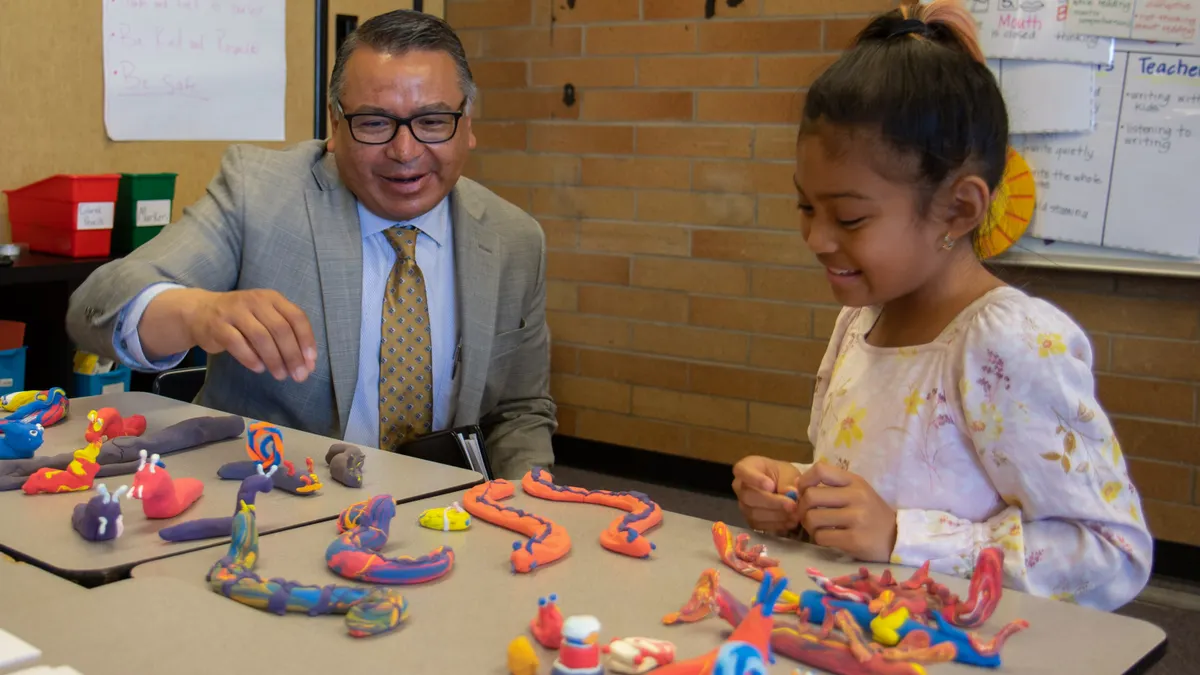Thirty-seven states and the District of Columbia have a Statewide Longitudinal Data System (SLDS) in place to connect data between educational systems.
Sparked by the availability of federal grants to build them starting in 2005, these data systems monitor students’ demographic information, progress and involvement, and the insights they yield can be used to tailor instructional approaches, inform administrators about at-risk populations, and ultimately narrow achievement gaps. Sixteen states have SLDS systems that also bring together early childhood education, K-12, post-secondary and workforce data, providing a panoramic view of education outcomes.
Data sharing and analysis yields obvious advantages for teachers, administrators and state education departments. “You cannot make good decisions without information,” says Claus Von Zastrow, principal at the Education Commission of the States (ECS), a nonprofit that has conducted research on SLDS development. “Having access to this data allows policymakers to make decisions without flying blind.”
Anita Larson, data and analytics supervisor at the Minnesota Department of Education, calls this “myth busting.”
“For example, there have been a lot of assumptions about developmental education, and our data system has illuminated that whole arena in significant ways,” Larson says. “Having these systems confirms and affirms some things we catch glimpses of and allows us to have better conversations about where research should go and what messages we should give our kids.”
Many states are still in the process of building out their SLDS or getting it off the ground. These four best practices can help administrators and state-level education leaders along the way.
1. Program sustainability
Even after an SLDS is created, it remains in danger if funding dwindles or new state leaders fail to take an interest in sustaining the program. “We’ve heard from a lot of states we’ve talked to that it can be difficult to carry over the SLDS as governors and legislators transition, especially if it’s not a priority for the new leaders,” says Zeke Perez, policy analyst at ECS. “When you have people who are invested in it, I think that does a lot to carry it over time.”
Bob Swiggum, chief information officer at the Georgia Department of Education, agrees. “Whenever you’re designing the system, make sure you can afford to manage it and keep it running,” he says. “If you can’t provide the training and continue to support the system with the needed infrastructure, don’t bother in the first place.”
2. Data privacy
Data security and privacy are serious — and legitimate — concerns for all SLDS stakeholders, but especially for students and their parents. “Very often, people worry that data will be used to be punitive, and that individual students will be reduced to test scores,” says Von Zastrow. “It’s critical to preserve the privacy of individual students and show people that the data, when used well, can improve their lives.”
He also stresses the importance of granting access to students and their parents to enable them to help inform personal decision making.
Georgia’s SLDS has a parent portal to engage students’ families. “It has really connected teachers and parents because they have access to the same set of data,” Swiggum says. “Imagine a 10th grader’s parent coming in and seeing 11 years of history on that child. That kind of mutual access has really helped bring together conversations about the individual student’s education.”
3. Engaged K-12 leaders and users
Engagement is key to the success of an SLDS, experts say. At every level, from the state department of education to the school, there needs to be leadership to create a culture of data use. “In part, that means leaders themselves should use information from these systems to make clear to people how these data are relevant, that they’re not abstract but actually affect people’s lives,” Von Zastrow says.
Keeping users engaged and involved is the most important element in creating an SLDS, says Swiggum. “Go to them and find out what they want,” he says “Don’t just ask them questions, but listen to their advice and buy or build something that meets their needs.”
Over the past eight years, Georgia built out its SLDS to connect district-level student information systems to the statewide system, ensuring that student records go with them when they change districts and teachers have immediate access to the data. Swiggum says teachers are primary users of the SLDS, but others include principals, parents and students.
The state has installed a 40-person governance organization to ensure that their data system remains a user-led endeavor. “We built this system based on what our users wanted, and we’ll continue expanding it to meet their needs,” he says. “As we move forward, we want them to be an integral part of the process.”
4. Ongoing training and communication
Training is a necessity when introducing a new technology tool, but for an SLDS to remain successful, coaching end users needs to be a continuing exercise. Georgia runs an ongoing face-to-face training program in schools across the state, using the sessions as opportunities to gather feedback from teachers and administrators. Minnesota's team also regularly goes into schools to educate teachers about how to use the system and make use of the data it yields.
"We work very closely with local users of our systems, and through that we’ve gotten much better at quickly assessing where users are in terms of data literacy," says Larson. "I’ve seen a lot of anxiety at the teacher level about interpreting data, and I think it’s up to administrators to make sure educators can understand the data, share it across grade levels, and make full use of it."
It’s also important to provide adequate training on data gathering, Von Zastrow adds. "Ultimately, the data are going to be as good as the collection practices at ground zero."
While effective data usage promises to improve student outcomes and close achievement gaps, Larson sees the SLDS as just one tool in the educator’s arsenal. "I'd never say we should rely solely on quantitative data to measure anything, because we’re human beings," she says. "These data systems can help us understand where we’re addressing our achievement gaps, but they should never replace the vital relationships between children and their teachers, families and communities."



















